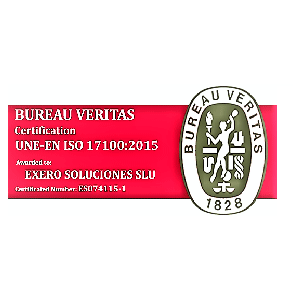Internationalize Your Business: 4 Key Points to Bear Fruit Abroad
Picture your company as a tree. The roots are the foundation, what you did to build your image and the company itself. Then you developed the trunk; your company began to grow and become stronger in order to withstand the harsh corporate winter. Now that spring has arrived, in what direction do you want your branches to grow?
We heard that your business is growing a lot. Congratulations!! After all that hard work, you deserve it. The next step is… to keep growing. Once you’ve set down your roots in your own country, the best idea is to look for opportunities to extend your reach and internationalize your business.
In one of our earlier articles we talked about how to internationalize your business and the benefits that come with it. And today we’re bringing you 4 key points you need to know to begin the process of growing your business abroad from a linguistic and translation point of view.
-
Get Closer to the Rest of The World:
First and foremost, your products and services need to reach future customers and prospects abroad. How? Well, in whatever language they speak. If you want to expand your company to France but your website is in Italian, any potential French customer isn’t going to stick around for long. People tend to have little patience and need everything given to them pre-chewed. And in their own language of course!
Your number one priority is to translate all of your content, and when we say all, we mean EVERYTHING: products, services, contact information, privacy and cookies policies, FAQs, etc. Don’t leave anything untranslated because it may make your company look highly unprofessional. You know what else might make you look unprofessional? A website with low-quality machine translations.
[caption id="attachment_1389" align="aligncenter" width="281"] Named after Marcelino Botín. Botín in Spanish also means “loot.” You can see where things went wrong.
Named after Marcelino Botín. Botín in Spanish also means “loot.” You can see where things went wrong.
Big companies know that having multiple language options to choose from is crucial for their international image. Some companies, such as Amazon, identify which products are likely to have the highest sales abroad and translate them into all possible languages. Others, like Netflix, have multi-language dubbing and subtitle options for their content according to user preferences. In short, translate and conquer.
There are, however, some interesting alternatives to content translation, like Ikea assembly instructions. It’s a very simple, yet efficient strategy. Instead of surrounding the product with text in numerous languages, get rid of the text altogether. Instructions for assembling Ikea furniture are purely visual; by only using pictures they eliminate the need for text. With this approach, anyone can understand the instructions regardless of their language. That being said, this strategy won’t work for all companies.
-
Watch Out for Cultural Barriers:
It’s extremely important to analyze your new target market. What worked in one place doesn’t mean it’s going to work the same way in another. A lot of products fail miserably as soon as they leave our borders. You don’t see a big market for peanut butter and jelly sandwiches outside of the U.S.
Ever heard of 100M in the U.S.? Not likely. The Spanish chain of cervecerías tried to expand to the States in 2011 and ended up filing for bankruptcy. Their mini sandwiches had mini-success and their business model just didn’t transfer well to the U.S. market.

In this situation, adapting what you’re selling may be the best option. A prime example of product adaptation comes from the Lay’s company. Their international marketing campaigns are as vast and varied as the number of flavors they have. Thanks to customer contests and some brave taste-testers, Lay’s chips are sold in more than 200 flavors worldwide. However, not all flavors are available in every country. In fact, many are country-specific and adapted to consumer preferences. Russia has Red Caviar. Australia has Vegemite. India has Magic Masala. Each to his own.
Luckily, there are professionals that specialize in foreign countries and cultures and how they relate to our own. These advisers can guide you through the process of adapting your product so that it makes the biggest splash abroad.
-
Understand Each Other:
If you decide to go international, you’ll surely have to meet with lots of people and make contacts in other countries. How do you plan on communicating with them?
Wait, don’t answer yet. I know you’re a very capable person and I’m sure you speak other languages. But that might not be enough. Trust me, you don’t want to be the one interrupting the conversation every other minute to ask them to repeat something you didn’t catch. You want to internationalize your business and that means you’re playing the big league. You’ve got to be on top of your game.
The answer is simple: hire an interpreter. There are many different kinds. Some do consecutive interpreting, others do simultaneous, or liaison or whispered interpreting. You can choose one or the other depending on your needs. If you want to learn more about which one is right for you, take a look at our article HERE.
-
Adapt your Marketing Strategy:
There is very special branch of translation devoted to adapting marketing campaigns. It’s called marketing translation and it’s fundamental for advertising your products and services abroad. Just as you’ll have to adapt your business wherever you go, you’ll have to do the same with your marketing strategy.
Does your company have a tagline or a motto? A catchy song that plays on the radio? Well, translating it word for word with a dictionary in one hand and Google Translate in the other (please, never do this) isn’t going to get your very far. What you need is a professional that can capture your message, transform it, and adapt to the target audience and their language.
Some of the best examples of this are product name changes that we’ve seen over the years. The food company Danone, which was founded in Spain, was changed to “Dannon” in the U.S. The company changed the name so it would sound more American and also because of pronunciation issues: people were calling it “Dan One.” A similar name change occurred with the Fiat Viaggio. This markedly Italian name was given an American twist and was transformed into the "Dodge Dart" for the U.S. market. Want to know what the Ford F-150 is called elsewhere? Well…
Luckily, marketing translators have the ability to effectively transmit your message in foreign markets and make it attractive to new target audiences. With their help, your marketing campaign will reach beyond the stars.
That’s all for today! We hope theses tips help you internationalize your business, at least the language part of it. Remember, you can always count on Exero Soluciones for your translation needs. Follow us on Twitter, Linkedin, and Facebook to get news on future articles and stay up to date with everything Exero.







Comments